by Deva Jones | Aug 14, 2014 | Congregational Trip, Racial Justice
The following reflection was written by Gordon Gibson, a civil rights leader and organizer.
This was originally posted in The Memphis Commercial Appeal here.
Why would people from around the country go to Mississippi, especially in the heat of July?
50 years ago hundreds of people went to Mississippi in June, July, and August to make a difference by joining with local residents to confront the state’s long history of racial discrimination.
This past July, I co-led a small group that went to Mississippi to encounter the history that was made 50 years ago. This is American history, important American history. Unlike the Shiloh Battlefield or Boston’s Freedom Trail, this is history where you can still meet and talk with some of the history-makers and learn about the history involving deep ethical issues of justice and human rights.
For people of religious sensibility, human rights and elemental justice were important in 1964’s “Freedom Summer,” and those values remain important today. The Living Legacy Project and the Unitarian Universalist College of Social Justice, co-sponsors of our trip, have been organizing such pilgrimages to introduce people to the sites and veterans of the civil rights movement because both organizations have found that these encounters can transform people from being “concerned for human rights” to being workers for human rights.
Those of us on the bus included a range of ages from teens to seventies, a range of knowledge from virtually none to some civil rights participation, and current residence all across the United States. What were some of the people, places, and issues that we encountered?
We heard from people deeply involved in leadership of the Mississippi Summer Project (the actual name of “Freedom Summer”), that there was disagreement then that continues now over bringing in hundreds of volunteers, most of them white college students. Did this disempower local residents who had been working for several years with the three or four dozen full-time civil rights workers in Mississippi? Or did it affirm the local residents by letting them know that they were not alone and isolated? Did the influx of volunteers put local people at greater risk of harassment by making their civil rights activities more obvious, or did it provide them a measure of protection by making any harassment an issue far beyond Mississippi?
We talked with grassroots volunteers like Roscoe Jones. In 1964, Roscoe Jones was 17 years old and had been assigned by Mickey Schwerner to lead the Freedom School in Meridian. Freedom Schools, one of the three main programs of the Summer Project, taught everything from basic literacy and black history to subjects like French. Roscoe Jones told us that, with 300 children and adults, Meridian’s was the largest Freedom School in the state. He spoke clearly to his goal in Freedom Summer (and in his work since): “equality,” and he noted that equality might or might not include integration.
We met the very impressive family of Vernon Dahmer, Sr. They continue to live on family-owned land north of Hattiesburg, and Mrs. Dahmer lives in the house re-built on the site where Mr. Dahmer was fatally injured in a 1966 arson attack by the Klan. Vernon Dahmer, Sr. was a long-time leader in getting members of the local black community registered to vote. The Klan executed him for advocating this bedrock American right, and three of his sons had to come home from military service to bury their father.
The Dahmer family has continued its service to the community (helping to restore an historic Rosenwald School, for example), and has welcomed successful prosecution of the Klan attackers. But it has also forgiven those involved in the attack who have admitted what they did and sought reconciliation.
The list of people and places we encountered in one week could go on: standing in Medgar Evers’ living room, seeing the crumbling remains of the store in Money where 14 year-old Emmett Till ran afoul of “the southern way of life,” honoring the persons and the burial places of James Chaney and Fannie Lou Hamer, listening to the personal accounts of the Rev. Ed King and Hollis Watkins, hearing people tell of the Klan beating of family members at the Mount Zion United Methodist Church near Philadelphia before the church building was burned…
I hope and believe that members of our group learned in their visit to Mississippi that a small group of dedicated people working in harmony with the best of American and religious principles can bring change. And I look forward to hearing from them over coming years of their own work as change agents.
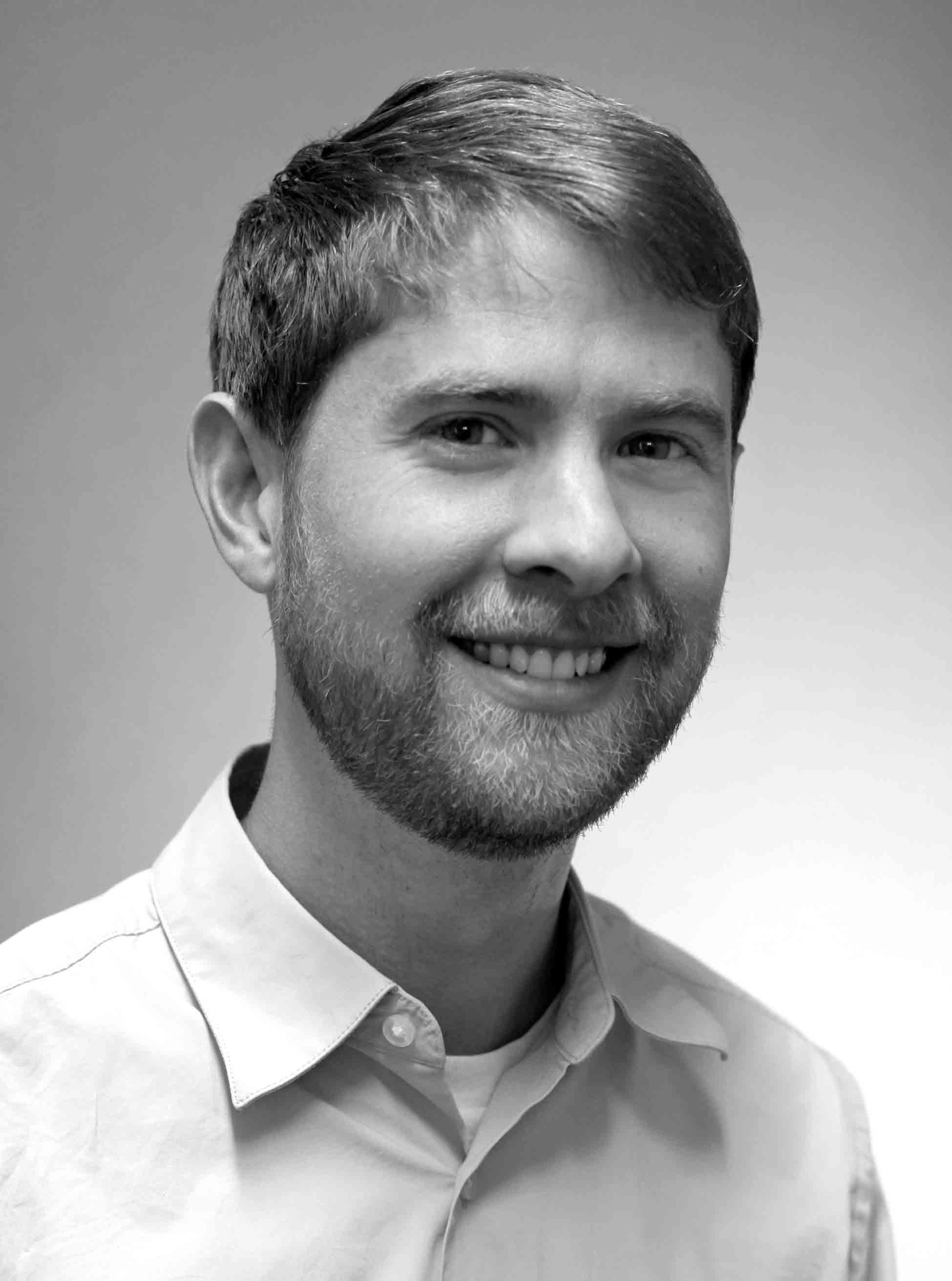
by Deva Jones | Feb 24, 2014 | Congregational Trip, Racial Justice
The following post was written by Evan Seitz, Senior Associate for Service-Learning Programs at the UU College of Social Justice (UUCSJ).
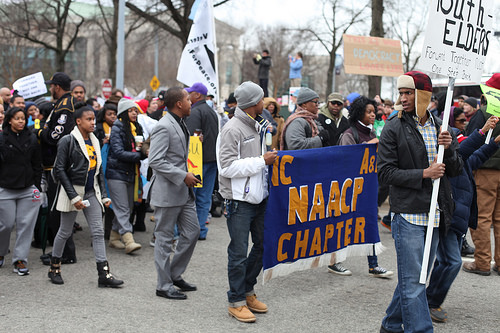
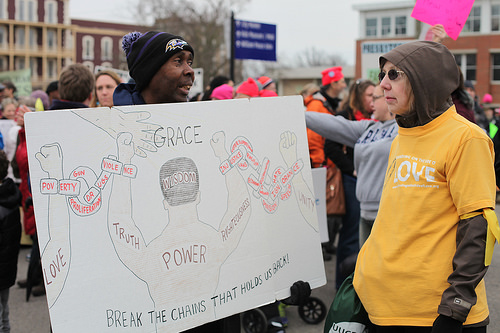
On February 8th, I, along with thousands of others, participated in the Moral March in Raleigh, North Carolina. Many say this march, organized by the North Carolina NAACP and a broad coalition of progressive groups, was the largest civil rights protest since the march from Selma. The masses of people, the diversity of groups and people – from medical students and teachers to organized labor and the Sierra Club – the impassioned speech by North Carolina NAACP leader Rev. Barber – it was a heady experience for me. I loved the intensity of that weekend and the sense of solidarity I felt with the people of North Carolina.
For the people of North Carolina, the march was one event in a series of escalating acts of protest against repressive policies passed by the state legislature. The backbone of this movement began in 2006, when Rev. Barber began organizing a coalition of organizations now known as the Historic Thousands on Jones Street (HKonJ) Coalition. This coalition has committed to work together to advance a broad progressive agenda. They have amassed an impressive list of accomplishments, including raising the minimum wage and preventing the previous administration from passing restrictions on voting.
Things took a turn for the worse in 2012 when North Carolina elected Pat McCrory as governor. In 2013, the legislature, with the governor’s support, passed a series of radical and regressive laws. Unemployment benefits for thousands were terminated; voting access was curtailed; funding for public education was slashed. The voter suppression bill was made possible largely due to the 2013 Supreme Courts decision in Shelby County v. Holder, which struck down key provision of the Voting Rights Act of 1965. Prior to the decision, many counties in North Carolina required pre-clearance from the justice department before changing voting laws, effectively requiring pre-clearance for any state-wide rule changes. The new law requires voters to have an ID (student IDs are not accepted), ends same day registration, ends straight party voting, and reduces early voting.
North Carolina is not alone. Since 2011, nineteen states have passed new voter suppression laws – including all southern states except Louisiana. Fifty years after the American Civil Rights movement, we are engaged in a new fight to protect our right to vote.
The way forward on this issue is still not clear. Rev. Barber has said that he believes the key to a progressive United States is an organized South. Will Barber’s strategy of a “fusion coalition” be a key to organizing against these laws? What will the role be for allies who live in states that don’t have voter suppression laws?
And now for my pitch: consider participating in the Mississippi Civil Rights Journey this summer. A group of 30 UUs of all ages will travel Mississippi by bus, exploring the stories, songs, and struggles of the Civil Rights movement. Your guides will include veterans of the Mississippi Freedom Summer of 1964, and we will stop to talk to the organizers and activists who made that monumental summer possible. We will also talk to those engaged in the struggle against today’s voter suppression. You can learn more here.
Martin Luther King Jr. said, “the arc of the moral universe is long, but it bends towards justice. “ Let’s continue to stand with those who are doing more than their fair share to bend that arc. Let’s learn from those who have done this work before. And let’s continue to walk this road with humility and courage – forward together, and not one step back.
by Deva Jones | Feb 1, 2013 | Youth
Though it may seem overwhelming at first, you can afford to take part in youth programs with the UU College of Social Justice (UUCSJ)! How? Fundraising — a key skill for social justice work. Being able to talk about money and how it can express your UU values will serve you in your endeavors now and in the future.
First, remember that program fees cover on-the-ground costs, including lodging, meals, program transportation, required educational materials, and the services of program leaders before, during, and after the trip. Participants are responsible for covering the cost of their own airfare, transportation to program site, and health insurance.
Once your parent(s)/guardian(s) have filled out your application and you’ve been accepted, it’ll be time to start raising money. Keep in mind the following pointers:
- Talk honestly with your family about how much of the program fee they can pay for and how much you’ll need to fundraise.
- Ask for donations — from your congregation, individuals in it, important adults in your life, community organizations like Kiwanis and Rotary Club, local businesses, government offices, and nonprofits. Whether you use an online fundraising platform (like IndieGoGo or Kickstarter) or host an old-fashioned spaghetti dinner at your congregation, your community can’t support you as a justice leader unless you ask.
- Connect your fundraising to your faith — when you’re asking for donations from UU people or organizations, reference UU principles. Make the connection between your beliefs and why you want to attend a UUCSJ youth program.
Resources to support your fundraising:
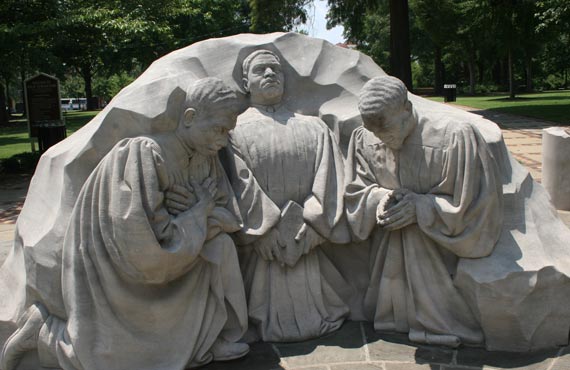
by Deva Jones | Aug 2, 2012 | Racial Justice
Hope Johnson, a UUCSJ trip leader for the Civil Rights Journey, is the minister of the UU Congregation of Central Nassau in Garden City, N.Y. In the following post, she traces the path of the group — and the lessons they learned — as they explored the history of the civil-rights movement.
While en route to Selma, Ala., a pivotal marker of the civil-rights movement, we stopped by the grave site of UU martyr Viola Liuzzo. She represented the best of UUSC’s values when she answered Rev. Dr. Martin Luther King Jr.’s call for people to come down to Selma. She responded all the way from Michigan, leaving five children and a husband behind as she drove to Selma in her green Oldsmobile. We learned about her heroic efforts.
Then, onto Selma. We were a multigenerational, multi-faith group that came together as one as we crossed the Edmund Pettus Bridge in silence and in reverence. We imagined the strength and the sustenance that were required to change the unfair voting rights laws. The people attempted to march twice and were turned back. It was the third attempt that was successful! We learned that perseverance matters. We witnessed the memories. We expressed the hope that abounds.
We visited the National Voting Rights Museum and Institute before celebrating our crossing. Our youth and young adults expressed their commitment to the work of dismantling racism, along with all of the “isms.” They understand the concept of linked oppressions. They are committed to sharing a newly discovered history — and not just black history that is celebrated during the month of February. No, they came to understand in our short time together that ours is a shared history. Everybody was at the table.
We visited Kelly Ingram Park, where we imagined the many young persons who fought for civil rights. Then onto the 16th Street Baptist Church, one of the headquarters of the civil-rights movement. This was the church where the “four little black girls” were killed on Sunday, September 15, 1963, at 10:22 a.m. when a bomb exploded. It is important that we remember their names: Addie Mae Collins, Carole Robertson, Cynthia Wesley, and Denise McNair. We also learned that two young African American boys also lost their lives that same afternoon — Virgil Ware and Johnnie Robinson. It is ironic that the Sunday School lesson of that day was “A Love that Forgives.” Little did anyone know how soon that lesson would be tested.
Our group saw what I call “the beloved community,” right there in the South as we followed the route of the civil-rights movement. We learned that, along with many cities throughout the South, the City of Birmingham took to heart that Sunday School lesson on love and forgiveness. From what we saw, forgiveness has moved steadily towards reconciliation.
This past week, thanks to the UUCSJ Civil Rights Journey, youth and young adults experienced an opportunity for transformation that will last a lifetime. Each one has accepted the challenge to make a difference in our world. I hope that you will join us next time. See you next year!
Questions about the Civil Rights Journey? Contact us about this and more service-learning opportunities.
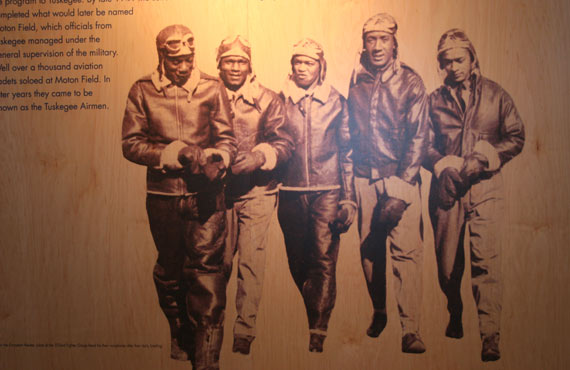
by Deva Jones | Jul 27, 2012 | Racial Justice
The following blog post was written by Celeste Allen, a youth participant on the 2012 Civil Rights Journey who hails from Scottsdale, Ariz.
On the first real work day of the Civil Rights Journey, the amazing George Friday, national organizer for the Bill of Rights Defense Committee, led a workshop on race. We talked about how there are many types of oppression. Essentially, the power systems are built around white, heterosexual, upper class, Christian, cisgender males. If you don’t fit into that power base, then the systems of culture and government work against you.
In trying to understand what prejudice and oppression based on skin color might feel like or be like, I use the lens of my sex. On the third day of our trip, we visited the Tuskegee Airfield and heard one Tuskegee airman’s story from when he was visiting a prisoner-of-war camp. The airman was an officer in the army and he was serving his country, but because he was black he could only travel to certain parts of the camp. The white German prisoners were allowed throughout the whole camp. I can try and empathize with that story; I can feel emotionally how isolating that might be. However, when I make the airman female and the prisoner male, the story hits me on a gut level. I feel pain and outrage and humiliation, and I can feel my body begin to physically react by straightening my spine and raising my chin. The second reaction is, I think, the more valuable experience for understanding.
On the other hand, I have also become more aware of the differences between different types of oppression. George Friday commented that racism in a black/white or African American/Caucasian sense will always have remembrances of slavery. All the pain, all the ways in which people were told they were objects to be bought and sold, all the warped concepts of white superiority and black inferiority will forever be a part of racial relations in this country. I cannot understand the weight of that history, because I have only traveled through this world as a white person living in a majority-white culture. In the same way, no one of male sex can understand the legacies inherited by being born into a female body. And no one who has lived their life as a citizen can know on a gut level what it means to be undocumented.
However, we can all understand the power and importance of being free from oppression.
Questions about the Civil Rights Journey? Contact us about this and more service-learning opportunities.





